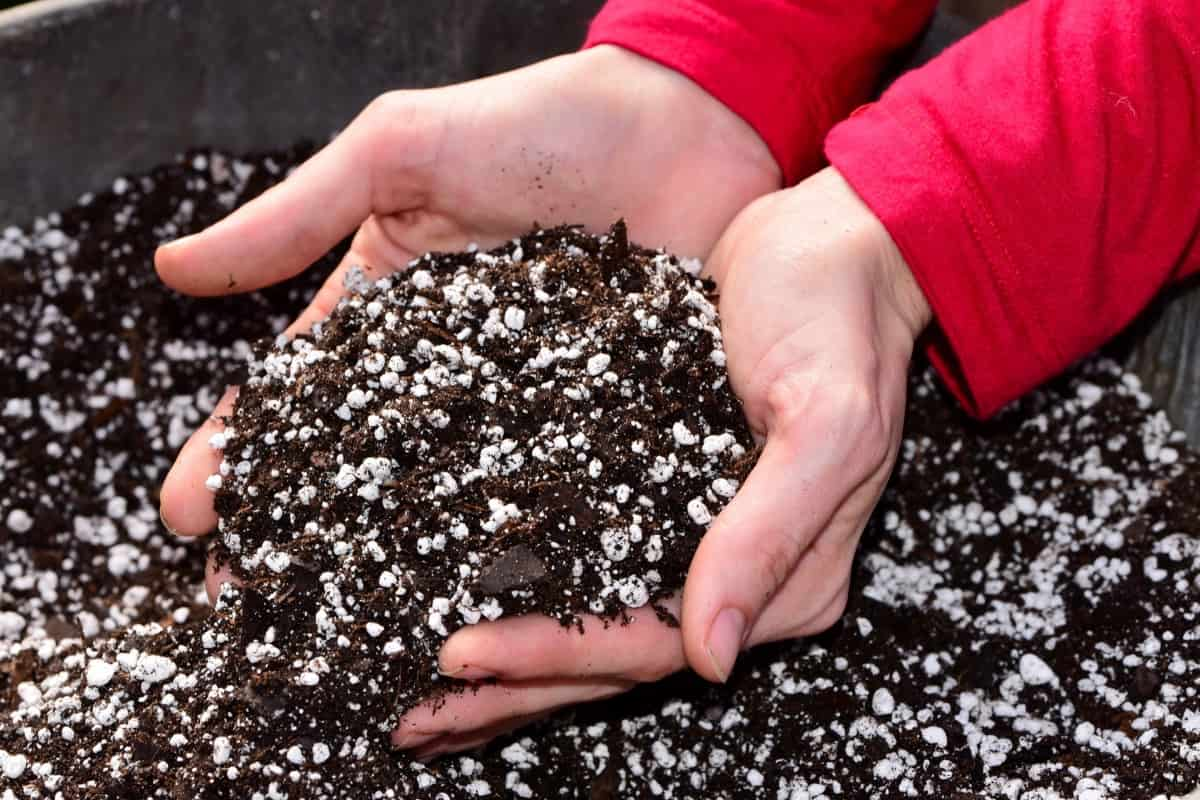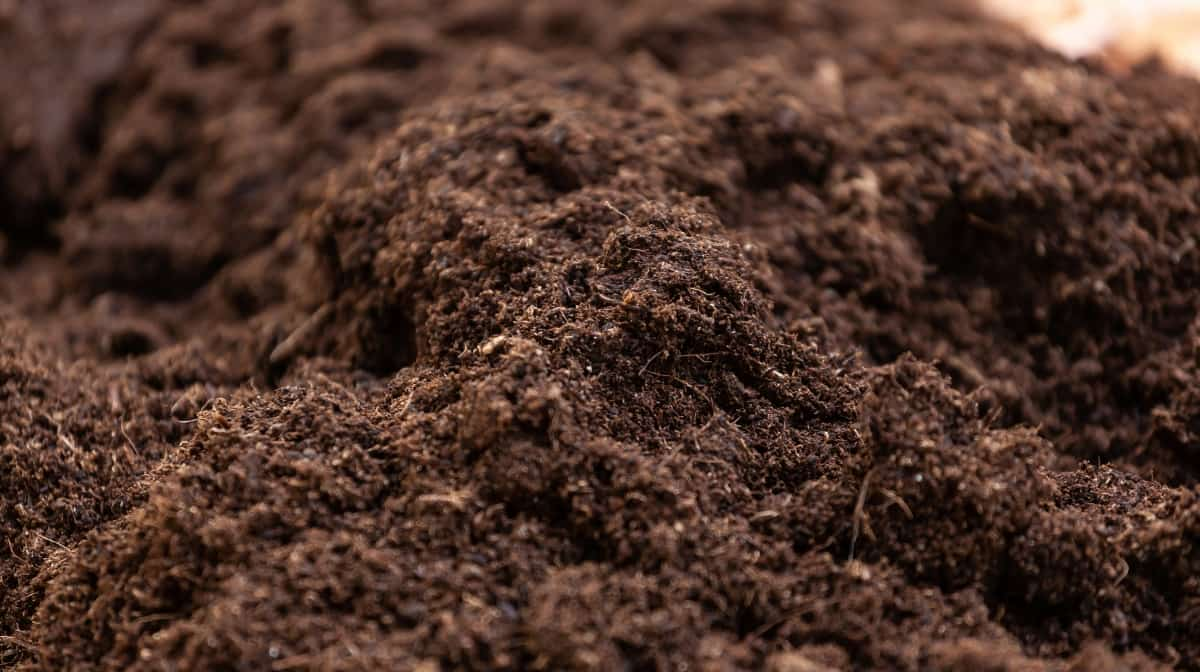Are you eager to start a thriving home garden with containers and hanging baskets but concerned about the cost of purchasing potting soil? Look no further! This simple guide will show you how to create your potting soil for containers and hanging baskets. You may save a lot of money and have full control over the components of your soil mix by following these simple steps. This do-it-yourself method will guarantee that your flowers and veggies flourish in the best soil possible.

How to Prepare Potting Soil for Containers
What are Containers and Hanging Baskets?
Containers and hanging baskets are popular for gardeners with limited space or wanting to add vertical interest to their outdoor areas. Containers are pots or planters that can be placed on the ground, patios, or balconies. They come in Different sizes and materials, allowing for design and plant selection flexibility.
As the name suggests, hanging baskets are containers suspended from hooks or brackets. They create a stunning visual display, especially when filled with cascading flowers or trailing vines. Both containers and hanging baskets provide opportunities for creativity and beautiful plant arrangements.
Importance of Potting Soil in Container and Hanging Basket Gardening
- Potting soil is lightweight, making plant roots grow easily. This makes plants stronger. Potting soil is lightweight and easy to transfer.
- Potting soil has excellent drainage, which plants need. It prevents root rot by draining excess water from containers. This boosts plant development and prevents illness.
- Potting soil is nutrient-rich. It can nourish heavy feeder plants for weeks and other plants for months. This reduces fertilizing and provides plants with critical nutrients.
- High-quality potting soil additives reduce disease, fungal infections, and weeds. Clean, well-composed potting soil promotes plant health.
- Potting soil keeps plants moist for longer. Water-loving and hanging basket plants benefit from this.
- Potting soil works for many plants. It grows vegetables, herbs, salad greens, ornamentals, cacti, and bonsai trees. Potting soil can be utilized for seed beginning and cutting propagation with modest ingredient changes.
Necessary Ingredients for DIY Potting Soil
- Perlite: Perlite enhances pore space and improves drainage in the soil. It has a neutral pH, which is beneficial for most plants.
- Vermiculite: Similar to perlite, vermiculite increases soil porosity and water retention. It also contains calcium and magnesium, providing additional nutrients to the plants.
- Compost: Compost or well-rotted manure enriches the soil with beneficial microbes and improves water-holding capacity. Ensure that homemade compost is fully decomposed before use.
- Peat Moss or coir fiber: Both peat moss and coir fiber are lightweight, nutrient-rich, and have excellent water-holding capabilities. Peat moss is cheaper, while coir fiber lasts longer and contains more nutrients. Peat moss has a higher pH compared to coir fiber’s neutral pH.
- Sand: Coarse builder’s sand is used to enhance soil drainage. It can be used as perlite but cannot replace vermiculite due to the lack of calcium and magnesium. Cacti may require additional sand or perlite for increased drainage.
- Lime or soil sulfur: Lime raises soil pH, while soil sulfur lowers it. Adjust the pH according to the specific requirements of your plants. Some plants prefer acidic soil (e.g., strawberries), while others thrive in alkaline soil (e.g., lettuce and sage).
- Fertilizer: Heavy feeder plants may require additional nutrients after a few weeks. If using peat moss, early fertilization is necessary, whereas coir fiber allows for delayed fertilization.
DIY Container Cost-Effective and Versatile Soil Mix for Successful Plant Growth for Hanging Baskets
Regarding container gardening, one of the major expenses is buying soil. However, you can save money and ensure the best potting soil mix by making your DIY container soil. It is cheap and offers several benefits compared to commercial mixes. By controlling the ingredients, you can create organic soil free from added chemicals, which is crucial for growing food. Additionally, customizing the mix for different plants guarantees optimal growth. Preparing large batches of DIY container mix ensures you always have soil on hand when needed.
Few Common Materials
peat moss or coco coir, compost or well-composted manure, perlite, and vermiculite. Peat moss and coco coir provide water retention, aeration, and nutrient enrichment. Compost adds vital nutrients and beneficial organisms while aiding moisture retention. Perlite prevents soil compaction and improves drainage, while vermiculite helps retain moisture and keeps the soil light and fluffy. If preferred, you can use a general-purpose soil mix instead of peat moss or coco fiber as the base ingredient.
In case you missed it: How to Install Worm Tower into Soil in Garden for Organic Composting

Soil Mix Types for Plant Growth
General Container Soil Mix
- Two parts peat moss, coco coir, or potting soil
- Two parts compost or composted manure
- 1 part perlite
- 1/4-1/2 parts vermiculite
Soilless Container Potting Mix
- 2 parts peat moss or coco coir
- 1 part perlite
- 1/4-1/2 parts vermiculite
Instructions: To prepare your DIY soil mix, gather the ingredients and necessary supplies like measuring containers, a shovel, a soil scoop, and a large garden tub or wheelbarrow. Combine all the ingredients in the tub or wheelbarrow and mix thoroughly. If the Soil mixture is dry, add some water while stirring to moisten it. Once well-mixed, your homemade container soil is ready for use.
- Optional Soil Amendments: For even richer soil, you can add optional organic soil amendments like worm castings, biochar soil enhancement, or natural organic soil builder. These additions enhance fertility, nutrient retention, and water drainage.
- Improving Drainage: If your plants require extra drainage, increase the amount of perlite in the recipe. For well-drained soil, use 1 1/2 parts perlite and 1/4 part vermiculite.
- Storing the Soil Mix: Unused soil can be stored back in an airtight container, such as a sealed five-gallon bucket, to maintain moisture and prevent pests from entering.
How to Create Potting Soil for Containers and Hanging Baskets
- Creating a basic potting soil mix is simple. It requires the following ingredients: 1 part compost or fully decomposed manure, 1 part perlite or vermiculite (or a combination of both), and 1 part peat moss or coir fiber.
- If you’re using peat moss, add a cup of lime to maintain a neutral pH. For cacti and succulents, use a blend of 2 parts peat moss or coir fiber, 1 part perlite, 1 part vermiculite, and two parts coarse sand.
- Seed starters benefit from a mixture of 2 parts peat moss or coir fiber, two parts vermiculite, 1 part coarse sand, and three tablespoons of lime (if using peat moss).
- Transplanting seedlings requires two parts peat moss or coir fiber, two parts vermiculite, 1 part compost, three tablespoons of lime (if using peat moss), and two tablespoons of organic granular fertilizer.
- For house plants, combine peat moss or coir fiber, 1.5 parts perlite, three tablespoons of lime (if using peat moss), and two tablespoons of organic granular fertilizer. After mixing the ingredients thoroughly, use the potting soil immediately or store it in a sealed plastic bag in a cool, dry place.
In case you missed it: Best Potting Soil and Fertilizers for Container Gardening

Conclusion
Creating your potting soil for containers and hanging baskets is simple and rewarding. Following the step-by-step guide and using the right ingredients can ensure optimal plant growth and enjoy a thriving home garden.
- Feed Your Flock for Less: Top 10 Tips to Save on Chicken Feed
- Ultimate Guide to Ossabaw Island Hog: Breeding, Raising, Diet, and Care
- Hatching Answers: The Top 10 Reasons Your Chickens Aren’t Laying Eggs
- Eggs and Economics: Breaking Down the Cost of Raising Backyard Chickens
- Defend Your Greens: Proven Methods to Keep Iguanas Out of Your Garden
- Ultimate Guide to Cinnamon Queen Chicken: A Comprehensive Guide for Beginners
- Ultimate Guide to California Tan Chicken: Breeding, Raising, Diet, Egg-Production and Care
- Ultimate Guide to Marsh Daisy Chicken: Breeding, Raising, Diet, and Care
- 10 Types of Chicken Farming Businesses You Can Start for Profits